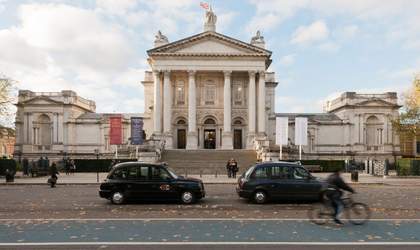
Tate Britain
© Tate Photography
Opened in 1897, the Tate Gallery was the original National Gallery of British Art. In 2000 it was renamed Tate Britain, restoring to the gallery its original function of collecting and displaying the work of British artists and of art made ‘within these shores’. Today Tate Britain represents British painting from the mid-16th century, and sculpture from the late Victorian period onward. It has an important collection of works on paper as well as an archive and library. The archive is effectively the national archive of 20th century British art. Tate Britain is also the home of the Turner bequest.
Around 1.5 million visitors come to Tate Britain annually, with over two-thirds of this figure coming for the collection displays. Fifty-five per cent of Tate Britain’s visitors are under the age of 45, and 250,000 young people take part in the gallery’s learning programmes each year. Tate Britain runs a variety of programmes for adults, including seminars, lectures, workshops and performances.
Tate Britain also reaches a wide overseas audience with its international touring exhibitions, its online programmes and broadcast media. Since 2000 Tate Britain exhibitions have travelled across Europe and the United States, as well as to diverse locations including Beijing, Istanbul, Melbourne, Sharjah and Tokyo.
Tate has a longstanding reputation as a centre for curatorial and scholarly excellence, and was endorsed as an Independent Research Organisation in 2005. The library and archive in Tate Britain are major specialist resources, as are the Prints and Drawings Rooms, and we are engaged in digitising the archive to give it wider reach to communities across the country. Curators work in tandem with university colleagues both informally and in collaborative partnerships, and we regularly welcome research fellows working with our collection.
